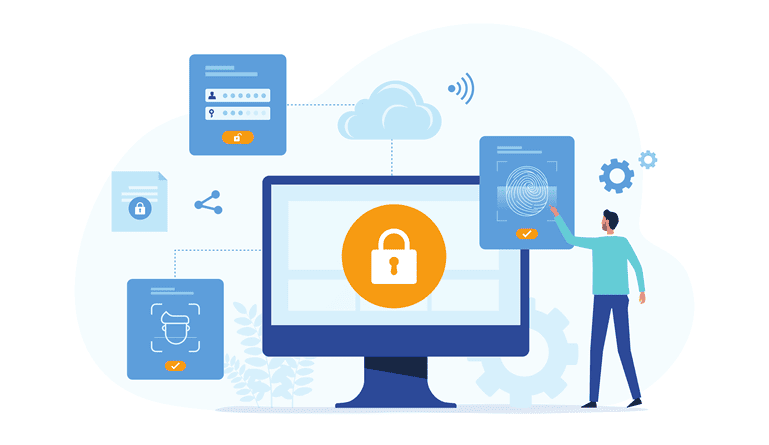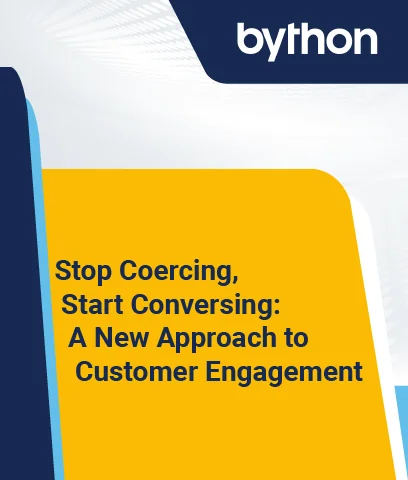In today’s fast-paced digital landscape, businesses face a growing challenge: managing third-party relationship risks. As companies increasingly rely on external vendors and partners for various tasks and services, robust third-party risk management strategies are more critical than ever. This reliance on third-party vendors introduces potential risks to sensitive data and overall business operations. Blockchain third-party risk management is a groundbreaking approach to transforming how organizations handle these complex relationships. It leverages distributed ledger technology to enhance transparency, security, and trust in vendor relationships.
- Introduction to Blockchain in Third-Party Risk Management
- How Blockchain Revolutionizes Third-Party Risk Management
- Steps to Implement Blockchain for TPRM
- Challenges and Considerations in Blockchain TPRM
- The Future of Blockchain in TPRM
- Case Study: Blockchain TPRM in Action
- FAQs About TPRM
Understanding Blockchain Third-Party Risk Management
Blockchain third-party risk management combines the immutable, decentralized nature of blockchain with the critical need for effective vendor oversight. This approach offers a new way to tackle challenges in supply chain management and vendor relationships, including compliance requirements, security risks, and data privacy concerns.
The Evolution of Third-Party Risk Management
Traditional third-party risk management often involves time-consuming manual processes, fragmented data sources, and a lack of real-time visibility. These challenges can make businesses vulnerable to various risks, from data breaches and compliance violations to reputational damage and financial losses. Blockchain technology addresses these vulnerabilities by creating a shared, tamper-proof ledger of all third-party interactions and credentials. This digital ledger ensures all parties have access to the same up-to-date information, reducing miscommunication and hidden agendas risks.
Key Benefits of Blockchain in TPRM
Implementing blockchain in third-party risk management offers several advantages:
- Enhanced transparency: Blockchain provides a single, shared view of all third-party data, improving visibility and accountability.
- Improved data integrity: The immutable nature of blockchain ensures that data is accurate, consistent, and tamper-proof, reducing data breaches.
- Real-time monitoring capabilities: Blockchain enables real-time tracking of vendor activities, performance, and compliance, allowing for proactive risk mitigation.
- Streamlined compliance processes: Smart contracts can automate compliance checks and reporting, ensuring adherence to regulatory requirements. This reduces the need for manual processes and helps manage third-party risks more effectively.
- Increased trust between parties: Blockchain fosters trust by providing a secure and transparent platform for collaboration and data sharing. This enhanced trust can lead to stronger and more resilient third-party relationships.
These benefits lead to more efficient operations, reduced risk exposure, and stronger vendor relationships. It can also streamline TPRM processes, improve data transparency, and reduce the reliance on manual processes.
How Blockchain Transforms Third-Party Risk Management
Let’s explore how blockchain is reshaping the TPRM landscape.
-
Immutable Record-Keeping
A significant advantage of blockchain third-party risk management is creating an immutable audit trail. Every transaction, update, or change is recorded on the blockchain, creating a permanent and unalterable history. This feature is valuable in industries with strict regulatory requirements, such as financial services.
Financial institutions often work with thousands of third parties, making compliance a complex task. Blockchain can simplify this by providing an indisputable record of all vendor interactions and credentials. It enhances transparency by creating a shared, tamper-proof record of all interactions.
-
Smart Contracts for Automated Compliance
Smart contracts, self-executing agreements with predefined terms, are another game-changing aspect of blockchain third-party risk management. These digital contracts can automate many aspects of vendor management, from initial onboarding to ongoing compliance checks. This automation helps financial institutions manage third-party risk more effectively by reducing the potential for human error and ensuring compliance with regulatory requirements. For instance, a smart contract could automatically trigger a compliance review if a vendor’s certification expires. This automation saves time and reduces human error risks in critical compliance processes.
-
Real-Time Risk Assessment
Traditional risk assessment often relies on periodic reviews, which can leave businesses exposed to emerging threats. Blockchain third-party risk management enables continuous, real-time monitoring of vendor activities and risk factors. Blockchain enables continuous monitoring of third-party engagements, providing real-time insights into potential issues. This real-time visibility allows organizations to identify and address potential issues before they escalate into major problems. It’s a proactive approach that can significantly enhance an organization’s risk management capabilities. Organizations can use blockchain-based solutions to analyze vast amounts of data from various sources, including cybersecurity monitoring systems, to identify potential risks and vulnerabilities.
Implementing Blockchain Third-Party Risk Management
While the benefits of blockchain TPRM are clear, implementation requires careful planning and execution.
Here’s a step-by-step guide to getting started:
-
Assess your current TPRM processes and identify pain points:
Determine the specific challenges you aim to address with blockchain, such as manual processes, lack of visibility, or data security concerns. Prioritize these pain points based on their potential impact and feasibility of improvement with blockchain technology.
-
Educate stakeholders about blockchain technology and its potential benefits:
Conduct workshops and training sessions to ensure all relevant teams understand the basics of blockchain and how it can improve TPRM. This includes addressing concerns, managing expectations, and building a consensus on the potential return on investment. It also involves outlining the strategic risk management benefits and addressing any concerns about adopting blockchain.
-
Choose the right blockchain platform for your needs:
Evaluate different blockchain platforms based on scalability, security, cost, and compatibility with your existing systems. Consider factors such as permissioned vs. permissionless blockchains, consensus mechanisms, and available tools and resources for development and integration. This selection process should involve technical experts, legal counsel, and representatives from relevant business units.
-
Develop a pilot program to test the technology in a controlled environment:
Start with a small-scale implementation with a limited number of vendors and processes. This pilot phase should focus on validating the technology’s capabilities, identifying potential challenges, and refining the implementation strategy. Gather feedback from participants and stakeholders to assess the effectiveness and identify areas for improvement. This pilot program will allow you to evaluate the technology’s effectiveness and make any necessary adjustments before full-scale deployment.
-
Gradually scale up implementation across your vendor network:
Based on the pilot program’s success, gradually expand the blockchain TPRM solution to include more vendors, processes, and data. It is essential to have a clear roadmap for scaling the solution and ensuring seamless integration with existing TPRM processes. Continuous monitoring and evaluation of the solution’s performance, security, and compliance are crucial for long-term success.
Successful implementation requires a cultural shift within the organization. It’s crucial to gain buy-in from all levels of the company and provide adequate training to ensure smooth adoption. The use of blockchain in TPRM is still an emerging technology, so staying informed about the latest developments, best practices, and regulatory changes is crucial. Regular assessments of your blockchain TPRM strategy will help ensure its continued effectiveness in managing third-party risks. Blockchain can revolutionize TPRM processes and create a more resilient and secure ecosystem for organizations and their third-party relationships.
Challenges and Considerations
While blockchain third-party risk management offers numerous benefits, organizations must consider potential hurdles.
-
Technological Complexity
Blockchain technology can be complex, requiring specialized knowledge and skills. Many organizations may need to invest in training or hire new talent to implement and manage a blockchain-based TPRM system effectively.
-
Scalability Concerns
As more participants join a blockchain network, transaction speeds can slow down. This scalability issue is a known challenge in blockchain technology and must be considered when implementing a large-scale TPRM solution.
-
Regulatory Uncertainty
The regulatory landscape surrounding blockchain technology is still evolving. Organizations must stay informed about relevant regulations and ensure their blockchain TPRM solutions comply with all applicable laws.
-
Integration with Existing Systems
Integrating blockchain technology with existing TPRM systems and processes can be challenging. Organizations need to carefully plan this integration to ensure smooth operations and data consistency.
The Future of Blockchain Third-Party Risk Management
Despite these challenges, the future of blockchain third-party risk management looks promising. As the technology matures and more organizations adopt blockchain-based solutions, we can expect to see:
-
Increased standardization across industries:
As blockchain technology becomes more widely adopted, industry-specific standards and best practices for TPRM will emerge. These standards will facilitate interoperability between different blockchain platforms, streamline implementation, and promote wider adoption.
-
More sophisticated smart contract capabilities:
Advancements in smart contract technology will enable more complex and automated TPRM processes. This includes automating due diligence checks, contract management, performance monitoring, and incident response, further reducing manual effort and enhancing efficiency.
-
Enhanced integration with other emerging technologies like AI and IoT:
Blockchain can integrate with artificial intelligence (AI) and the Internet of Things (IoT) to enhance TPRM capabilities further. AI can analyze vast datasets collected through blockchain and IoT devices to identify patterns, predict risks, and automate decision-making, leading to more proactive and predictive risk management.
-
Greater regulatory clarity and support:
Governments and regulatory bodies are actively working to establish clear guidelines and frameworks for blockchain technology. This clarity will foster trust and confidence in blockchain-based solutions, encouraging wider adoption in regulated industries such as financial services and healthcare.
These developments will likely make blockchain TPRM more accessible and effective for organizations of all sizes.
Case Study: Blockchain TPRM in Action
To illustrate the real-world impact of blockchain third-party risk management, let’s look at a hypothetical case study based on trends in the industry:
| Challenge | Solution | Result |
|---|---|---|
| A global bank struggled with managing compliance for its 5,000+ vendors | Implemented a blockchain-based TPRM system with smart contracts for automated compliance checks | Reduced compliance review time by 60% and improved accuracy of vendor data |
| Lacked real-time visibility into vendor risk profiles | Utilized blockchain’s real-time monitoring capabilities | Identified and mitigated 3 high-risk vendor issues before they escalated |
| High costs associated with manual TPRM processes | Automated routine TPRM tasks through blockchain and smart contracts | Achieved 40% cost reduction in TPRM operations over 2 years |
This case study demonstrates how blockchain third-party risk management can address common TPRM challenges and deliver tangible benefits to organizations.
Final Thoughts
Blockchain third-party risk management significantly advances how organizations handle vendor relationships and risks. Businesses can create more robust, efficient, and trustworthy TPRM processes by leveraging blockchain technology’s strengths – transparency, immutability, and decentralization. Blockchain offers robust solutions for managing third-party risks by providing transparency, security, and efficiency.
The benefits of blockchain TPRM are numerous, from enhanced data integrity to automated compliance checks. While challenges exist, the potential for this technology to transform third-party risk management is undeniable. It enables real-time data sharing, reducing the reliance on manual processes and enabling proactive risk mitigation.
As blockchain technology matures, we can expect even more innovative applications in third-party risk management. Organizations embracing this technology will navigate vendor relationships in the digital age better. Organizations can leverage the power of this technology to improve their risk management strategy and protect their business from potential threats.
Blockchain third-party risk management is a powerful tool reshaping how we think about and manage risk in our increasingly interconnected business world. As we move forward, it will play a crucial role in building more resilient, transparent, and trustworthy business ecosystems. Organizations can mitigate risks more effectively and enhance their overall TPRM processes by adopting blockchain technology. The increasing reliance on external vendors highlights the need for innovative solutions like blockchain to address the complexities of third-party risk management in today’s interconnected business world.
FAQs about Blockchain Third-Party Risk Management
Q. What is Blockchain in risk management?
A. Blockchain in risk management uses distributed ledger technology to create a secure, transparent, and immutable record of all risk-related data and transactions. In third-party risk management, it lets organizations maintain a shared, real-time view of vendor information, compliance status, and risk factors.
Q. What are the 5 phases of third party risk management?
A. The five phases of third-party risk management typically include:
- Identification: Recognizing and cataloging all third-party relationships
- Assessment: Evaluating potential risks associated with each third party
- Due Diligence: Conducting thorough background checks and verifications
- Contracting: Establishing clear agreements with risk mitigation measures
- Ongoing Monitoring: Continuously tracking and reassessing third-party risks
Blockchain technology can enhance each phase by providing a secure, transparent platform for managing and sharing relevant information.
Q. Does Blockchain use third party?
A. Blockchain itself is decentralized and doesn’t inherently require third parties. However, blockchain solutions often involve third-party service providers for implementation, maintenance, and integration in practical applications. Blockchain manages relationships with external vendors and partners more effectively in third-party risk management.
Q. What is included in third-party risk management?
A. Third-party risk management typically includes:
- Vendor identification and categorization
- Risk assessment and due diligence
- Contract management
- Performance monitoring
- Compliance verification
- Incident response planning
- Continuous risk monitoring and reassessment
Blockchain third-party risk management enhances these processes by providing a secure, transparent, and automated platform for managing all aspects of third-party relationships. It provides a secure and transparent way to manage data privacy, track vendor performance, and ensure compliance with industry regulations.







